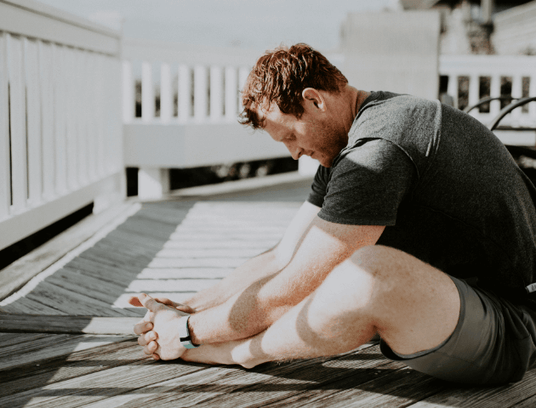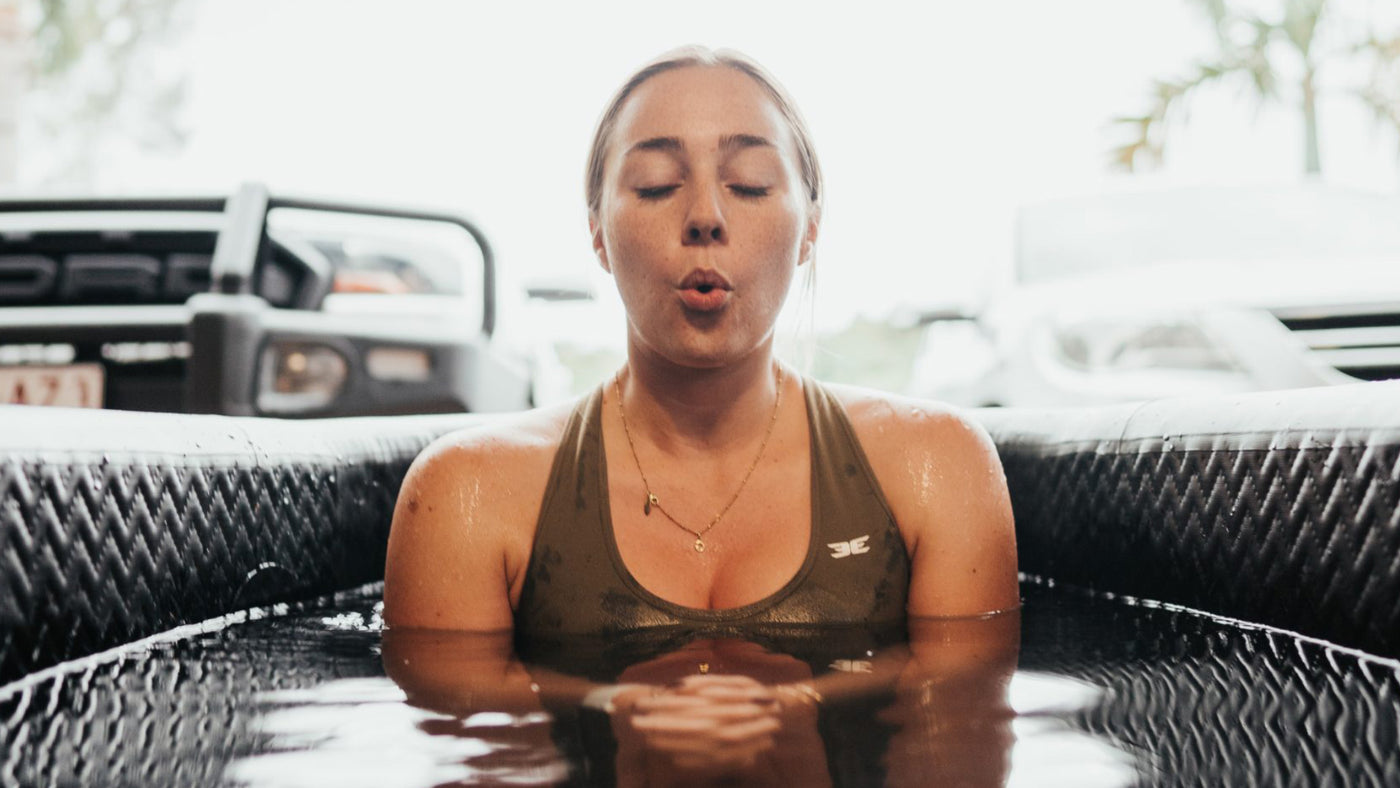Whate Are The Top 4 Ice Bath Questions and Benefits?
-
![]()
Why is it hard to breath in a ice bath?
Breathing serves as the bridge between the mind and body, and a mindful breathing practice can profoundly influence both, depending on the techniques applied.
When you immerse yourself in cold water, such as in an ice bath or cold plunge, your body undergoes a shock response, triggering immediate changes in breath rate, heart rate, and blood pressure. This response also includes the release of adrenaline, noradrenaline, dopamine, and other stress-related hormones as the body reacts to protect itself.
The benefits of cold water immersion are widely recognized and increasingly supported by scientific research. However, to fully harness these benefits and ensure your safety, it’s crucial to approach the cold with a strong awareness of your breathing, helping you optimize your experience.
-
![]()
How can cold plunges reduce stress?
By immersing your body in chilled water, the sudden cold sets off a reaction in the limbic (ancient) area in the base of your brain that is programmed to respond to such dramatic external events, in this case it senses that you might be freezing dangerously. This is also called the 'fight-or-flight' response.
The associated benefits of this response means that your mindfulness of the present becomes more profound, helping you offset stress.
Additionally this response to ‘environmental stress’ conditions our brain to cope better with the stressors of everyday life and helps decrease the production of inflammatory cytokines which are linked to anxiety and depression.
Most athletes report higher moods and better sleep after an ice bath.
-
![]()
Do ice baths reduce lactic acid?
During a training session, your muscles burn fuel and that creates a build-up of toxic waste products and lactic acids. Your body will naturally eliminate these waste products over a day or two however ice baths can reduce this recovery time to hours.
-
![]()
Is it ok to shiver after an Ice Bath?
Dr. Susanna Søeberg, a leading researcher in deliberate cold exposure, introduced the Søeberg Principle: To maximize the metabolic benefits of cold exposure, allow your body to reheat naturally by "Ending With Cold."
Moreover, embracing shivering during cold exposure can further boost metabolic activity. Shivering triggers the release of succinate from muscles, which in turn stimulates brown fat thermogenesis, enhancing the body's ability to generate heat.

Mood & Mental state
Lift your mood
Cold water immersion can trigger a floodgate of mood-enhancing chemicals in the brain by awaking a natural ‘fight-or-flight’ response.
This response to ‘environmental stress’ conditions our brain to cope better with the stressors of everyday life and helps decrease the production of inflammatory cytokines which are linked to anxiety and depression.
By exposing your body to colder temperatures, you’re able to build up a higher tolerance to stress.

Immune System Regulation
Shift your immune system into gear
Repeated cold water immersions, which has been shown to increase the metabolic rate in humans due to activations of brown adipose fat (BAT) and shivering, also elevates blood concentrations of neurotransmitters dopamine and adrenaline.
Growing numbers of research studies support that short-term physiological stress such as cold exposure, prepares the immune system to fight infections.
With regular exposure to physiological stressors, cold water swimming challenges your body to function beyond its comfort zone, affecting immune function.

Sleep
Enjoy a good night’s sleep
Rest habits are triggered and regulated by the brain and the nervous system and ice bath therapy has been shown to have a direct effect on both. After the initial cold water temperature shock, your body is able to calm down and becomes more resilient to changes in our environment. This translate into you building up a higher tolerance to stress by regulating your cortisol levels helping improve the symptoms of depression and reducing the instance of sleep-related disorders.

Athletic Recovery
Improve Muscle Recovery
Mastering the extreme conditions of the iCool ice baths unlocks hidden abilities that enhance your performance and recovery. Not only does cold water immersion (CWI) improve recovery from exercise-induced muscle injury it is more likely topositively influence muscular power performance and sorenessafter high-intensity exercise than passive recovery. The iCoolsport ice baths speed up the process by mitigating inflammation and delayed-onset muscle pain (enhancing the removal of serum creatine kinase) by offering ice bath therapy exactly where and when you need it most.
How to get into your Ice Bath
-
When should I Ice Bath and for how long?
The earlier you get into an ice bath after a workout or competition, the better the recovery effects will be on your body. However if your goal is to build muscle then Ice Bathing before your workout is more ideal. For endurance athletes not focused on muscle gain, you should immerse yourself right after a training session and stay in as long as you can (30 seconds is normally minimum), but never more than your body can with take. Five to seven minutes is great and there's really no need to exceed 10-15 minutes.
-
What is the best temperature for Ice Baths?
A cold plunge is typically considered most effective at around five degrees Celsius, though this can be too intense for beginners. If you're new to the practice, it's advisable to start with warmer temperatures and gradually decrease the temperature as you become more accustomed.
-
Who should use Ice Baths?
Ice baths can be used for any type of athlete, and after any type of sport or training. iCoolsport has supplied to many sporting teams and elite athletes all over the world, such as runners, swimmers, cyclists, boxers, rowers, soccer and basketball players and many more.
-
Is the depth of an Ice Bath important?
The benefits of ice bath recovery is obtained with high-static pressure immersion only available in baths with a minimum depth of 55 cm. The deeper the immersion, the better effects it will have in your body. It is not recommended immersing your head.
-
How should I breath during or before an Ice Bath?
Before and during your Ice Bath focus on taking deep, controlled breaths and maintaining long slow and solid inhales and exhales otherwise known as box breathing. This will assist you to get the most out of your recovery sessions and the maximum health, fitness and immunity benefits.
Alternative breathing methods such as the Wim Hof method are also beneficial for increasing the benefits of stress reduction. Please make sure to follow the health guidelines before conducting this type of breathwork and not to hyperventilate whilst in your Ice Bath.
-
Follow advice from your doctor
Ice Baths can increase your heart rate and blood pressure, therefore it is important to consult your healthcare practitioner before you commence ice bathing.
It's also important to become familiar with your own limits and always follow the advice of coaches, doctors and physiotherapists to get the biggest health benefits from your sessions.













